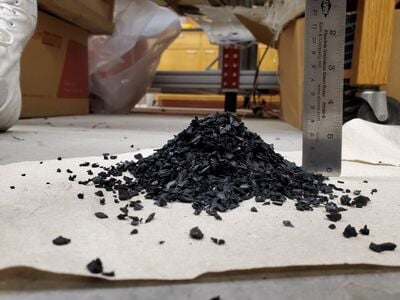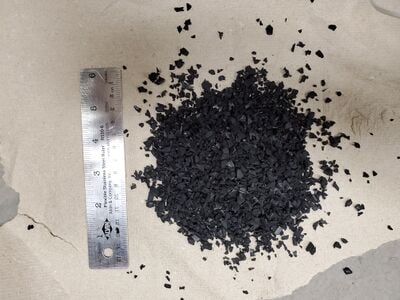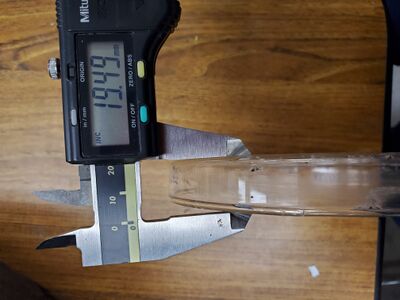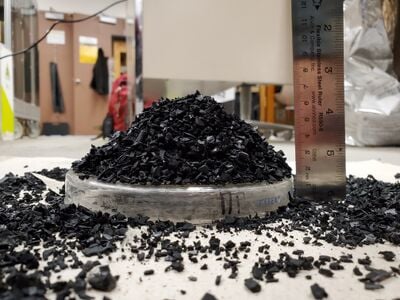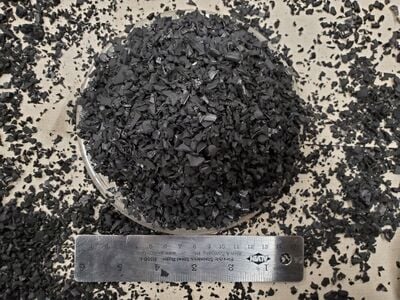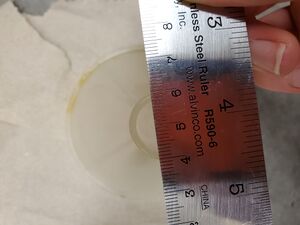
This page show an easy and reproducible way to calculate the angle of repose of any particle through the fixed funnel technique. This is good if you have limited supplies to calculate the angle of repose.
Angle of Repose for any Particle using the Funnel Technique[edit | edit source]
[1]
What you'll need:
- Your particle/material (lots of it)
- A funnel of your choosing
- A ruler or caliper
- Piece of paper or paper towel
Step 1: Collect your materials.
Step 2: Measure the inner and outer diameter of the funnel you will be using with either a ruler or a caliper.
Step 3: Lay out a piece of paper towel or paper in your work-space so the particles are easy to clean up. Begin steadily pouring your particle through the funnel, allowing the pieces to pile. Make sure to keep your funnel at a fixed height.
Step 4: Once the pile reaches a maximum height (the particles stop piling and start to flow down the side), stop funneling and measure the maximum radius and the height of the pile with a ruler.
Step 5: The calculation for the angle of repose is the Arctangent of height divided by maximum radius of the pile. Depending on which program you use, you could end up with radians. To convert from radians to degrees, multiple your calculated number by 180 divided by pi.
Angle of Repose for any Particle using the Dish Technique[edit | edit source]
[2]
What you'll need:
- Your particle/material (lots of it)
- A petri dish or an elevated surface (can be round or square)
- A ruler or caliper
- Piece of paper or paper towel
Step 1: Collect your materials.
Step 2: Measure the radius and height of your petri dish or elevated surface.
Step 3: Pour your particle onto the petri dish and pile it as high as you can go.
Step 4: Measure the maximum radius of the pile created and the maximum height found.
Step 5: The calculation for the angle of repose is the Arctangent of maximum height divided by radius of the pile. Convert from radians to degrees if necessary.
Citations:
- [1] H. M. Beakawi Al-Hashemi and O. S. Baghabra Al-Amoudi, “A review on the angle of repose of granular materials,” Powder Technol., vol. 330, pp. 397–417, May 2018.
- [2] M. D. Kurkuri, C. Randall, and D. Losic, “New method of measuring the angle of repose of hard wheat grain,” 2012.


